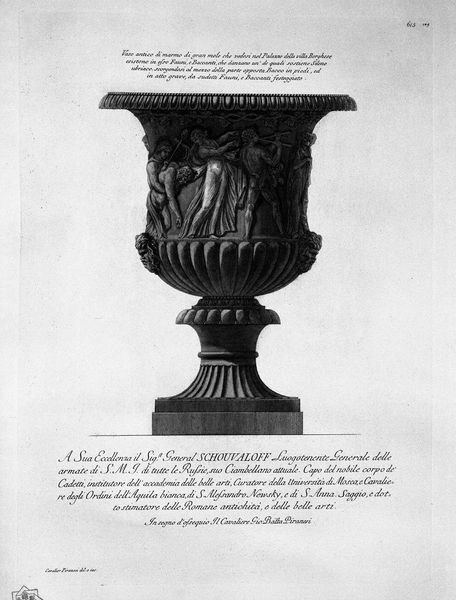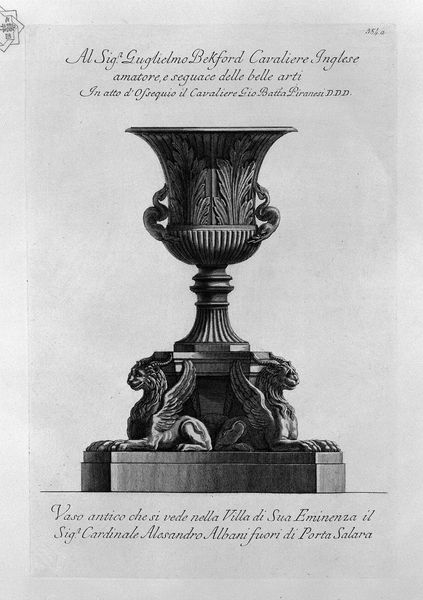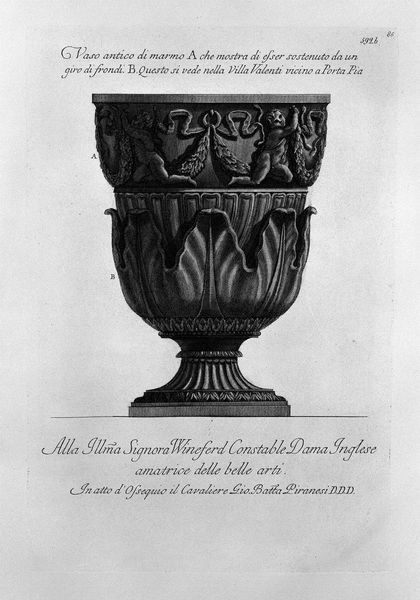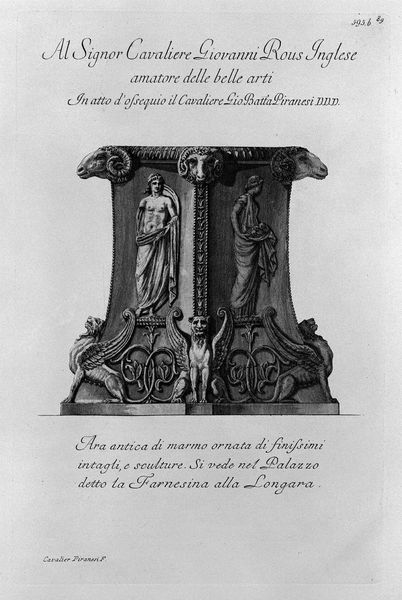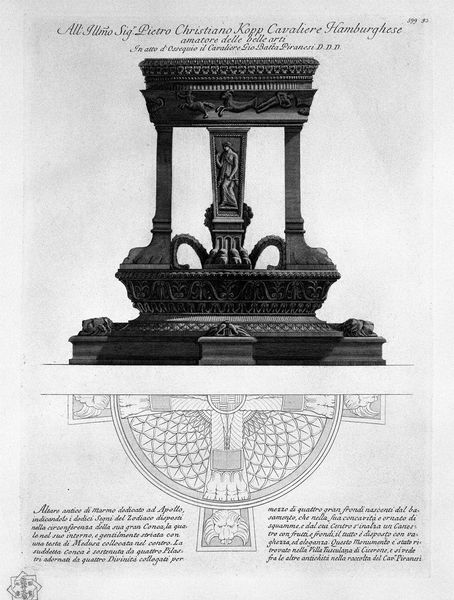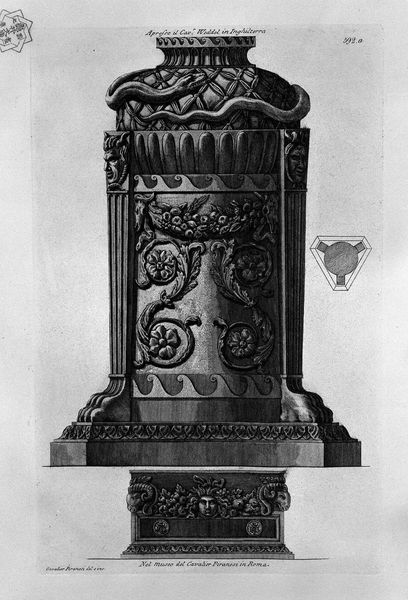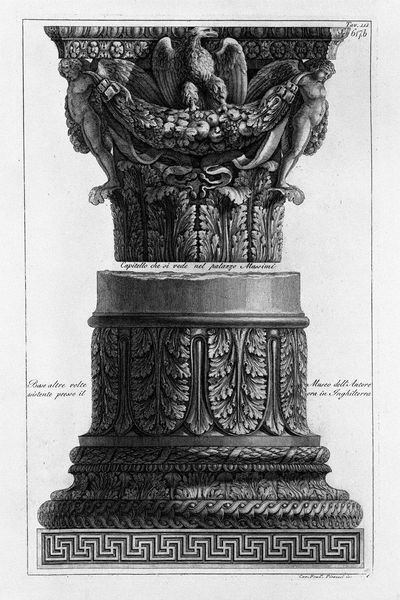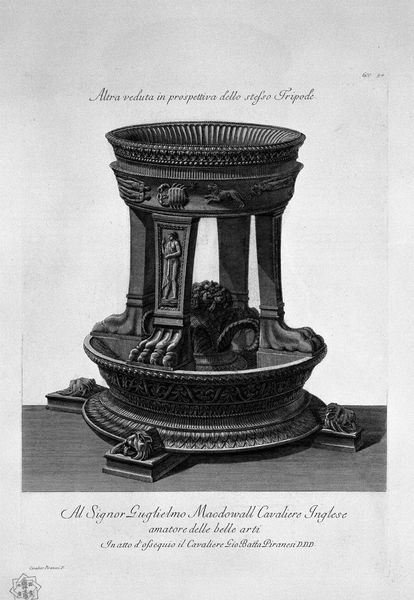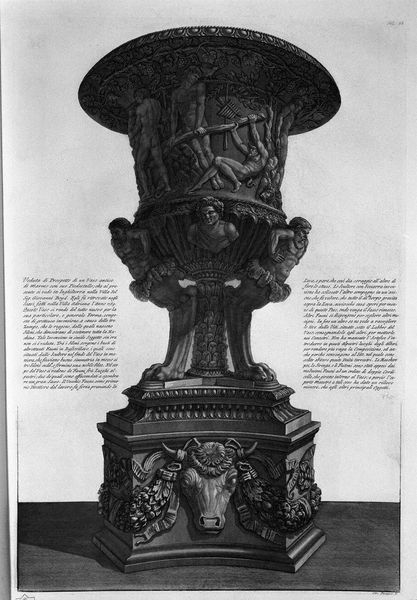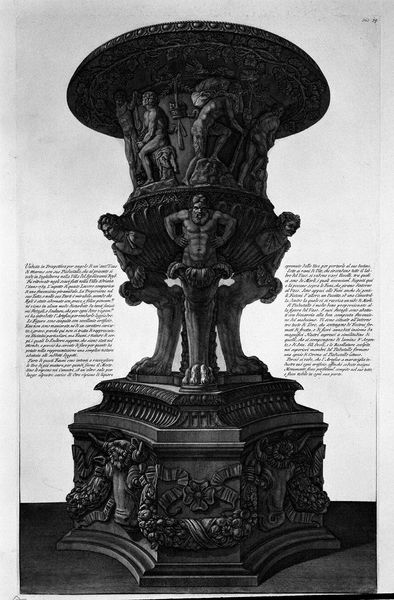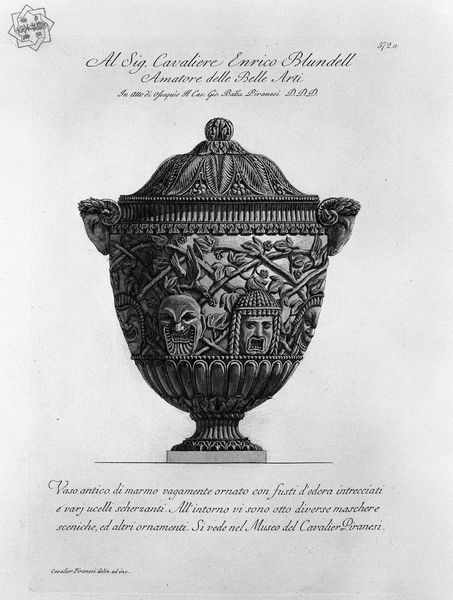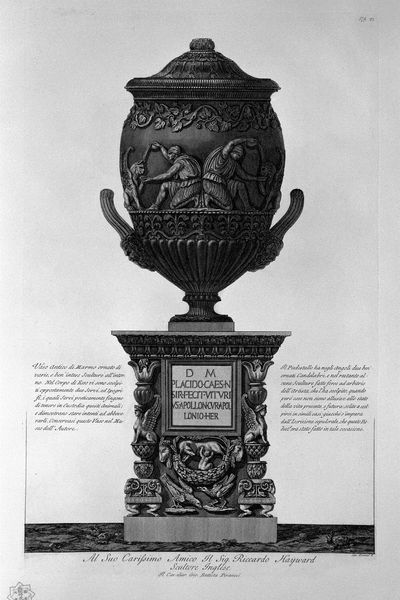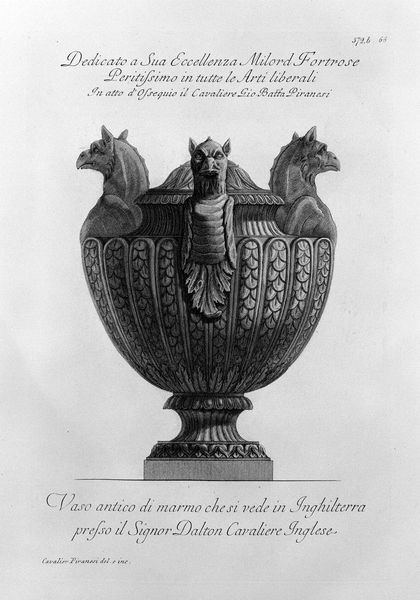
Antique vase of clay, which is seen in the collection designed by Pirro Ligorio in the Vatican Library
0:00
0:00
drawing, print, ink, graphite, engraving
#
pencil drawn
#
drawing
# print
#
pencil sketch
#
classical-realism
#
charcoal drawing
#
ink
#
pencil drawing
#
geometric
#
graphite
#
graphite
#
engraving
Copyright: Public domain
Editor: This print, titled "Antique vase of clay," is attributed to Giovanni Battista Piranesi. The description says it's a rendering of a vase designed by Pirro Ligorio. What strikes me is how detailed the engraving is, especially considering it's depicting a relatively mundane object. What do you make of it? Curator: This print invites a materialist reading because Piranesi’s technique of engraving elevates the vase beyond its simple function as a vessel. The very act of meticulously reproducing it transforms terracotta, a common material, into an object of luxury, especially if consider how laborious print-making by hand was. Editor: That's interesting. So you're saying the process of making the image changes the value of the vase itself? Curator: Exactly! The act of engraving highlights the skilled labor involved. Furthermore, the inscription dedicates the print to "Milord Fortrose," signifying it's intended for elite consumption, further distancing it from the clay it's based on. Consider also the social context – the rising interest in classical antiquity and how this image, as a printed object, aided in disseminating ancient artistic designs to a wider audience, influencing taste and production. Where do you think mass production stands on Piranesi's vision? Editor: So, it is mass production versus singular artistic value. Interesting perspective, thanks. It seems that by examining production and cultural influence, we see the object transcending its form, in many different ways. Curator: Precisely! Considering its creation and intended market really opens the work to new layers of understanding.
Comments
No comments
Be the first to comment and join the conversation on the ultimate creative platform.
